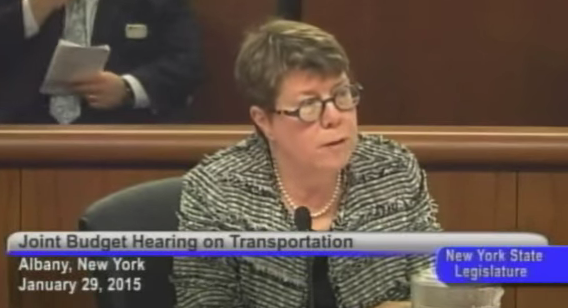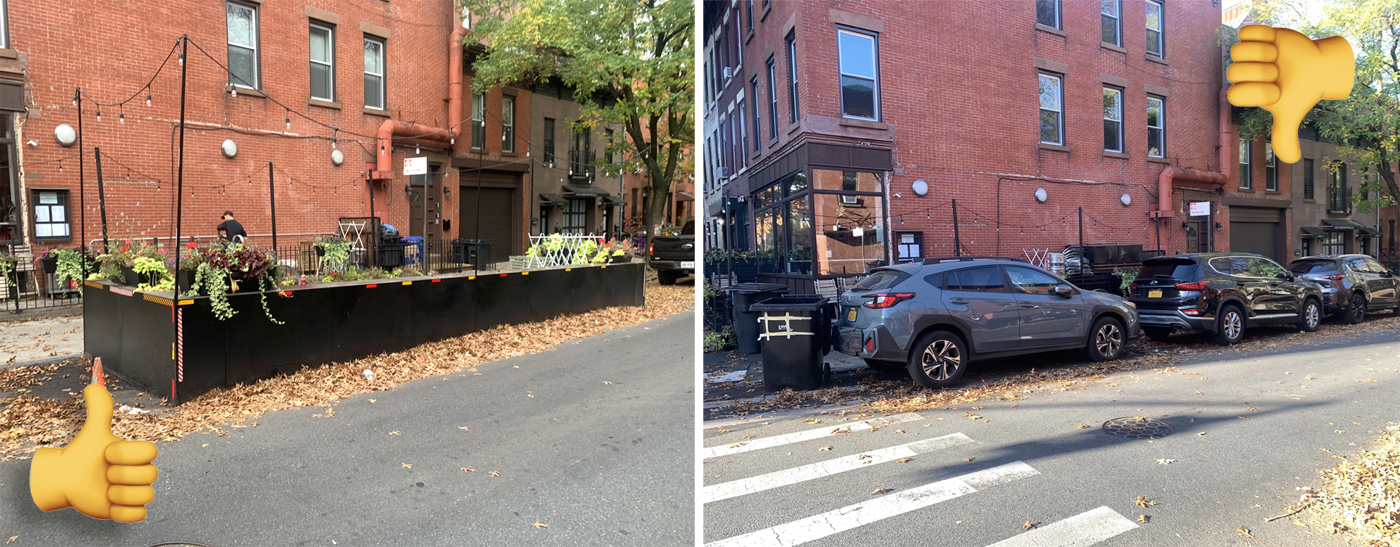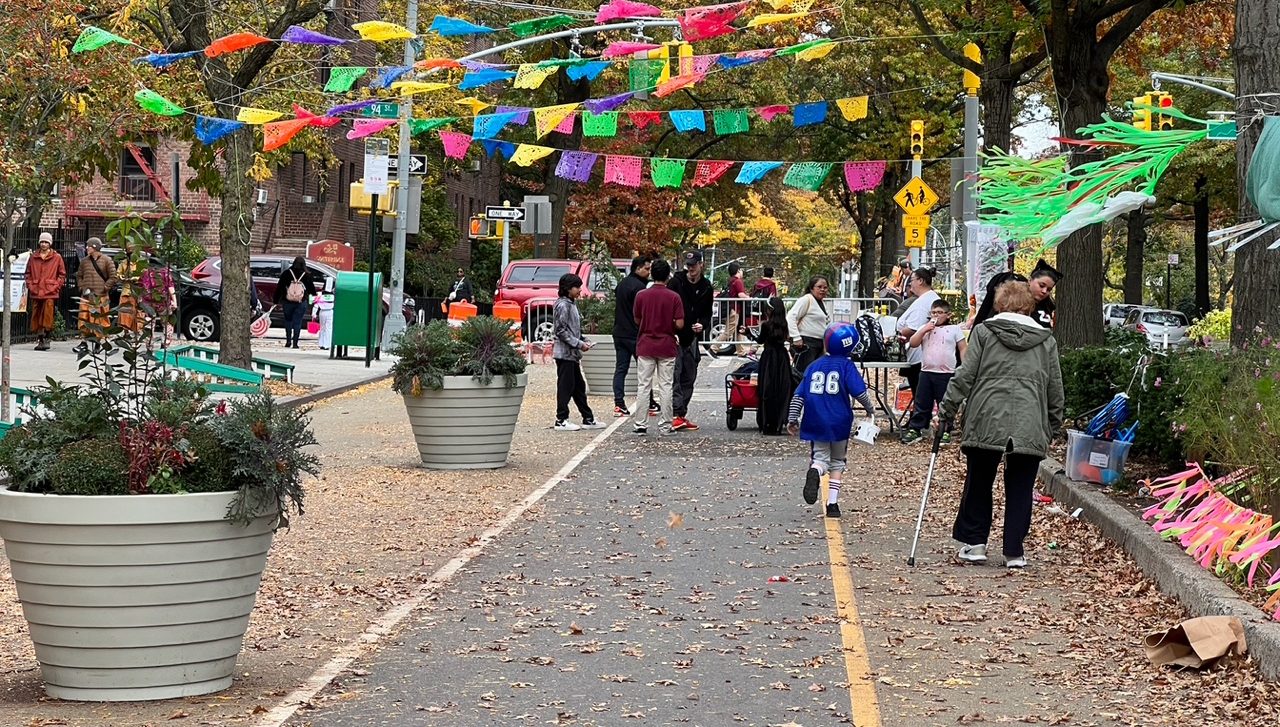Nearly four dozen advocates from across the state will travel to Albany tomorrow to make the case for better policies to support walking and biking as budget hearings get underway in the state legislature. The push comes days after the Cuomo administration told legislators that while it is committed to active transportation, dedicated funding that would make up for shrinking federal funds isn't necessary.

The advocacy day is organized by New Yorkers for Active Transportation, a coalition of the New York Bicycling Coalition, Parks & Trails New York, Tri-State Transportation Campaign, and other groups.
Their main ask: $20 million in dedicated annual funding from the state budget for bicycle and pedestrian projects. While pedestrians and cyclists comprise 29 percent of New York's traffic fatalities, advocates estimate that only two percent of the state's transportation spending goes to bicycle and pedestrian infrastructure. They are calling for a "fair share for safety."
It's hard to know exactly how much the state is spending on walking and biking infrastructure. While it's easy to account for funding given to a specific project, like a bike path, larger projects and funding streams can include active transportation upgrades, and the amount spent directly on bike-ped improvements is not tracked.
At a hearing last Thursday on the state's transportation budget, Senator Marc Panepinto of Buffalo asked Transportation Commissioner Joan McDonald if the budget includes dedicated funding for walking and biking.
"It doesn't contain dedicated," she said, explaining that the state allocates funding to those projects as needed. McDonald pointed to distributions of $26.5 million in January 2013, $67 million in January 2014, and $70 million last October.
But these allocations don't mean that the state is actually spending its own money on safer streets. In each case, the state DOT is passing through funds from the federal government. What McDonald didn't mention is that federal support for bicycle and pedestrian projects has dropped significantly in recent years.
The most recent transportation bill, MAP-21, cut funding for bicycle and pedestrian programs in New York state by 30 percent. Prospects are bleak for restoring the cuts in Congress, so advocates are turning to Albany to make up the shortfall with $20 million in the state budget.
Last year, legislators from across the state, including a group of elected officials from upper Manhattan, joined advocates to push for a $20 million budget line. The effort was not successful in securing the funds.
In addition to the allocations McDonald listed, the state distributed federal highway safety funds to walking and biking projects last June, and bike/ped projects were also included among the winners of the state's regional economic development grants. "We have been very aggressively making investments in bicycle and pedestrian projects across the state," McDonald said.
Panepinto pointed out that this is not the same as a guarantee. "What you're saying is, we're going to rely on your historical commitment moving forward?" he asked.
"Yes," McDonald replied.
In addition to a dedicated fund and better tracking of bicycle and pedestrian investments, New Yorkers for Active Transportation wants the state to close the gaps in the Erie Canalway Trail. The path, totaling more than 300 miles, is more than three-quarters complete. Trail advocates are aiming for the remaining 80 miles to be under construction or in design by 2017.
The group is also calling for a fully-funded, five-year capital investment plan for transit statewide.





